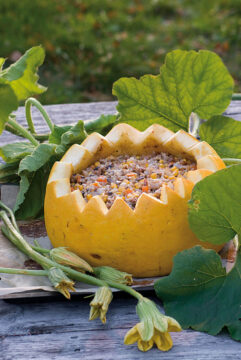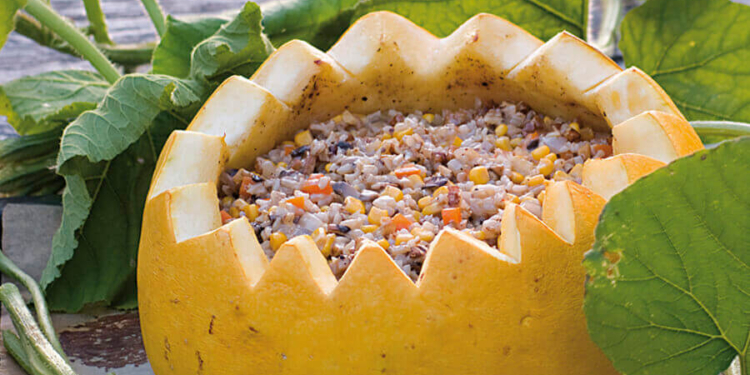Last month I wrote about the role fat plays in our bodies and how fat in our meals is actually helpful in losing weight. Today we will look at non-food items that can be helpful for weight loss.
Awareness
Bring awareness to everything food-related. So many of us rush to the food market, rush around the store, rush while we prepare meals and rush when we eat. When you slow down and take the time to bring awareness to the things you do, life becomes richer and much more satisfying. You might begin to notice the beautiful colors and textures of your food. You might feel the vibrant energy that fresh vegetables and leafy greens exude. You might actually enjoy being in their presence, enjoy touching them and enjoy preparing a meal with them.
When you take your time, you are open to new creative ideas. You allow yourself to be inspired. When you bring attention and awareness into preparing meals, your energy and love can flow into the food, and such fortified food will nourish you on an even deeper level. You stop experiencing food preparation as a chore or a nuisance and start to consider it quality time well spent.
Presence
One reason why you have gained weight might very well be that you eat too much. And if you do eat too much, one reason could be that you are not really present when you eat. You might be distracted by other things, or you might eat so quickly that your brain does not have a chance to register how much you have already eaten.
The brain needs time to record the appearance, aroma, taste and texture of your food. It is then better prepared to send messages to the digestive organs regarding the production of particular enzymes, hormones, bile and stomach acid to facilitate the optimal breakdown of your food. But it also needs to register the sensual experience of eating, tasting, chewing and swallowing in order to evaluate the quantity of food you have eaten and send you the message, “You’ve had enough food for now—your nutritional requirements have been met.” If you are not fully present and aware while eating, you can easily end up with a full stomach but without a feeling of satisfaction. So you continue to eat beyond your nutritional needs. Without pleasure, there is no satisfaction from food. Without satisfaction, there is the danger of overeating.
When you slow down and eat consciously, you can really enjoy your food and take pleasure in eating. You can notice how you feel—and realize when you have had enough. Here are a few tips on how to slow down:
Take ten deep breaths before you start to eat—get into a relaxed and conscious mode.
Take one to three breaths between bites to slow down eating speed and fill up on oxygen.
Really savor your food by paying attention to its appearance, color, aroma, taste and texture.
Chew each bite until your food becomes liquid—then swallow. Eat using chopsticks—they will provide smaller mouthfuls. Between each bite, while you are chewing, put down your utensils and make a deliberate and conscious action of bringing the next bite to your mouth.
Really pay attention to all the sensations. The goal is not to fill your stomach to a maximum, but to eat only as much as you need to sustain you until the next meal. By bringing awareness to how you eat, you will be able to feel when you have had just enough to energize you.
England’s Queen Mother, who lived to be 101 years old, was asked about her secret to longevity. “I eat until I feel three-quarters full,” she told journalists.
In China, it is considered impolite to say “My stomach is full.” Instead, the proper comment is “I have eaten just the right amount.”
Oxygen
One of the most common mistakes we make is not breathing fully while we eat. Breath is more essential to weight loss than you might imagine. You can go for weeks without eating and days without drinking but only minutes without breathing.
Oxygen is the most important “nutrient” for keeping us alive. While the nutrients from food start reaching our cells twenty to thirty minutes after we eat, oxygen is utilized within seconds after we inhale. Every cell in our body needs a constant stream of oxygen, or else it will die off.
Body fat is essentially stored energy. In order to make use of this energy—and lose weight—we need to burn off the fat, and our digestive fire can burn powerfully only with generous amounts of oxygen. A plentiful oxygen supply also boosts our metabolic rate, allowing all bodily processes, including calorie burning, to work more efficiently and effectively.
Water
Our bodies are made up of 60 to 70 percent water, and water is essential for our sustenance. It is involved with all metabolic processes, carrying nutrients to our cells and toxins out of the body. Keeping well hydrated is a prerequisite for maintaining a smooth and efficient metabolism.
As adults, we lose our sense of thirst, which is so prominent in children. Instead of thirst, we might feel a mild hunger pang and be tempted to reach for something sweet, especially in the afternoon when many of us experience a dip in energy. To relieve an energy lull, drink a glass or two of water instead of biting into a candy bar. Then, check in with your body. Do you still crave sweets? Most likely, the water will have flushed away both cravings and tiredness.
Turn to water any time you feel yourself compulsively reaching for unhealthful foods or drinks that you know are likely to put on the pounds. Pause, have a glass of water, sit down and relax. Then, ask your body what it really wants. When you take the time to inquire and listen you will probably hear that deep down, your body wants to be nourished with real food and to burn clean energy.
Start your day, first thing in the morning, with a glass or two of water to flush to out toxins and provide a fresh start. Have some more water an hour before lunch to moisten your digestive tract for optimal digestion and absorption when lunch arrives. But do not drink a lot during meals. Having a sip once in a while is fine, but drinking too much liquid during a meal will dilute your digestive juices. Have some water in the afternoon to prevent dehydration and cravings for sweets and an hour before dinner, again to moisten your intestines.
Marika Blossfeldt
Author . Speaker . Coach
https://marikab.com/cookbook/
Stuffed Pumpkin
Ingredients
- 2 cups (480 ml) water
- 1 cup (240 ml) brown rice, rinsed
- 1 tablespoon olive oil
- 2 pinches salt
- 1 medium onion, chopped
- 1 pound (500 g) mushrooms, cleaned, cut into slivers
- 3 tablespoons olive oil
- 2/3 cup (160 ml) walnuts, broken into small pieces
- 1 package (15 ounces or 420 g) frozen corn
- 1 red bell pepper, cut into small cubes
- 2 cups (480 ml) grated cheese, divided in half
- 1 small pumpkin
- 1 tablespoon olive oil
- salt and pepper
Instructions
Food Recipe Instructions
1 Preheat the oven to 400°F (200°C).
2 Bring the water to a boil. Add the rice, oil and salt and bring to a second boil, then reduce the heat to its lowest setting and simmer untouched for 40 minutes or until all water is absorbed.
3 Sauté the onions and mushrooms in the oil. Add salt and pepper to taste.
4 When the rice is cooked, combine with the sauté. Stir in the walnuts, corn, bell pepper and 1 cup (240 ml) of the grated cheese.
5 Cut off and discard the top quarter of the pumpkin. Remove the seeds and fibers from the bottom part of the pumpkin and cut its upper edge into a zigzag pattern. Spread the oil inside the pumpkin and sprinkle salt and pepper to taste.
6 Fill the pumpkin with the rice mixture and sprinkle the remaining grated cheese on top.
Cover the top with aluminum foil and bake until the flesh of the pumpkin turns soft, at least 1 hour.
ENJOY!












